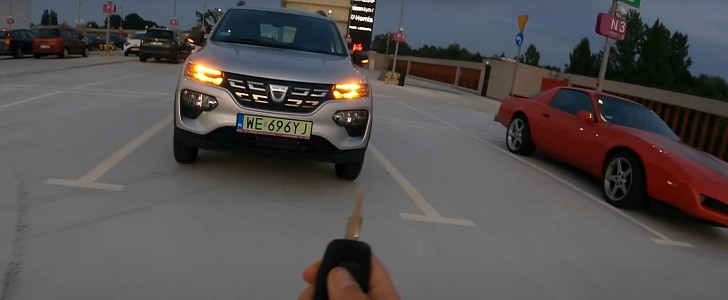At the time of its launch in the first part of 2021, the Dacia Spring was at the beginning of a new era: that of electric mobility within everyone's reach, and the most affordable electric vehicle on the European market.
The Dacia Spring has a 33 kW (45 horsepower) electric motor and a top speed of 77 mph (125 kph). Someone wanted to check it out, so they did a speed test. On Joe Black's YouTube channel, we can see the figures indicated by the speedometer after the driver has put the pedal to the floor.
This way we discover that officially declared numbers can be exceeded. While the data sheet says 125 kph, in real traffic we see the speedometer reaching 131 kph (81 mph). That's around 6 kph (3.7 mph) more than the official figures.
The Dacia Spring has a 26.8 kWh battery and can be charged either from a 220V household socket or a Wall Box or, optionally, from a DC terminal. The model has a range of 142 miles (230 km) according to the WLTP cycle and 189 miles (305 km) according to the WLTP City cycle (which includes only the urban part of the approved cycle).
The Spring comes standard with a wide range of safety equipment including a speed limiter, ABS, ESP, electronic brake force distribution, 6 airbags, emergency call (SOS button), automatic headlamp activation, and automatic emergency braking.
At the end of March 2022, almost 40,000 Dacia Spring vehicles were already in circulation in Europe. Most of these had been registered in France (more than 18,000 units), Italy (6,700 units), and Germany (5,100 units).
At the time of launch, the electric car started at €21,790 ($25,931) on the German market, or €12,220 ($14,542) with a government subsidy of €9,570 ($11,389). Meanwhile, an extra €2,000 (around $2,100) has been added on top of that.
This way we discover that officially declared numbers can be exceeded. While the data sheet says 125 kph, in real traffic we see the speedometer reaching 131 kph (81 mph). That's around 6 kph (3.7 mph) more than the official figures.
The Dacia Spring has a 26.8 kWh battery and can be charged either from a 220V household socket or a Wall Box or, optionally, from a DC terminal. The model has a range of 142 miles (230 km) according to the WLTP cycle and 189 miles (305 km) according to the WLTP City cycle (which includes only the urban part of the approved cycle).
The Spring comes standard with a wide range of safety equipment including a speed limiter, ABS, ESP, electronic brake force distribution, 6 airbags, emergency call (SOS button), automatic headlamp activation, and automatic emergency braking.
At the end of March 2022, almost 40,000 Dacia Spring vehicles were already in circulation in Europe. Most of these had been registered in France (more than 18,000 units), Italy (6,700 units), and Germany (5,100 units).
At the time of launch, the electric car started at €21,790 ($25,931) on the German market, or €12,220 ($14,542) with a government subsidy of €9,570 ($11,389). Meanwhile, an extra €2,000 (around $2,100) has been added on top of that.







